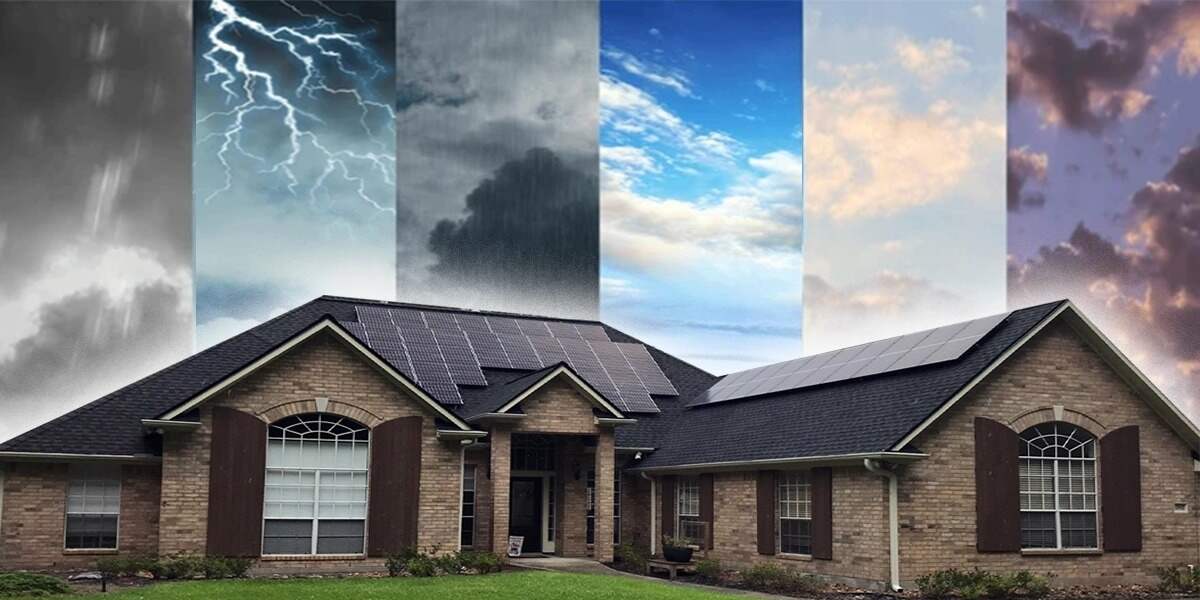Language
Currency


As solar storage systems become increasingly popular in both residential and commercial applications, more attention is being paid to how they perform under varying weather conditions. In reality, system efficiency is not fixed—it is influenced by factors such as sunlight, temperature, precipitation, and even air quality. Understanding these variables helps optimize system design, improve self-consumption rates, and ensure stable power supply during extreme weather events.
Solar power works by converting sunlight into electricity, and its efficiency is affected by several weather-related factors:
Sunlight Intensity
The power output of PV modules is closely tied to sunlight intensity. For example, a 250W monocrystalline module under standard test conditions (1000W/m² irradiance) can generate around 0.25 kWh of electricity per hour. On cloudy or overcast days, output may drop to just 20–50%. Data shows that in rainy or overcast conditions, daily generation may fall to only 30–60% of a sunny day’s output.
Ambient Temperature
High temperatures reduce the voltage output of solar modules, lowering overall efficiency. Typically, efficiency decreases by about 0.4–0.5% for every 1°C increase in temperature. Conversely, cooler weather can slightly boost efficiency, though low sunlight still limits output.
Rain and Snow
Rain can wash away dust from panel surfaces, helping maintain efficiency. However, continuous rainy days with low sunlight reduce total generation. Snow accumulation may temporarily block solar output unless panels are cleared or designed with a steeper tilt angle for natural shedding.
Air Quality and Shading
Air pollution, smog, and shading from trees or buildings can significantly lower generation. In smog-heavy urban environments, solar output may decline by 10–25%.
While PV generation is directly affected by weather, lithium battery performance is more sensitive to temperature. Weather changes can indirectly impact charging and discharging efficiency as well as long-term lifespan.
Battery Temperature Management: At low temperatures, charging efficiency decreases and capacity utilization drops. High temperatures accelerate aging, reducing cycle life and reliability.
Installation and Cooling Design: Proper ventilation or shaded installation reduces heat impact. In colder climates, insulation or thermal barriers can help maintain stable performance.
Smart Temperature Control: Advanced storage systems from Yohoo Elec feature intelligent thermal management, enabling stable performance in environments from -10°C to 45°C, even under extreme weather conditions.
The efficiency of a solar-plus-storage system depends not only on individual components but also on overall design, storage capacity, and control strategies.
| Weather Condition | System Performance | Response Strategy |
|---|---|---|
| Sunny Days | Solar output peaks; surplus energy can be stored or fed to the grid | Optimize charging schedules to ensure nighttime supply |
| Cloudy/Rainy | PV output decreases; storage becomes main power source | Pre-store energy to cover essential loads |
| High Temperatures | Battery efficiency slightly reduced; minor impact on modules | Use thermal management and optimized charging to extend lifespan |
| Low Temperatures | Battery charge/discharge capability decreases | Apply pre-heating and insulation measures |
| Extreme Weather (storms/snowstorms) | PV generation may halt; storage ensures supply continuity | Use modular storage and smart load management |
Residential Use
On sunny days, solar power first meets household demand, with excess stored for nighttime use—reducing grid reliance.
During rainy days or outages, batteries automatically supply power to essential appliances like refrigerators, lighting, and communication devices.
Commercial & Public Facilities
Critical applications such as cold-chain logistics, data centers, and hospitals rely on energy storage for resilience against weather disruptions.
Flexible charge/discharge strategies help lower peak electricity costs while improving energy security.
Optimization Strategies
Module Selection & Layout: Choose components with low temperature coefficients and high durability; adjust tilt and orientation for maximum efficiency.
Battery Thermal Management: Use smart temperature control or indoor installation to keep batteries within optimal operating range.
Charging & Discharging Management: Align schedules with sunlight availability and demand patterns to maximize self-consumption.
Routine Maintenance: Regularly clean panels, remove snow, and inspect batteries and controllers to ensure long-term efficiency.
Weather is a key factor influencing the efficiency of solar storage systems. By carefully selecting components, optimizing storage design, and applying intelligent scheduling, Yohoo Elec systems maintain stable and efficient operation even under cloudy, cold, hot, or extreme conditions.
Understanding the impact of weather not only helps maximize daily energy efficiency but also ensures reliable backup power—supporting sustainable, low-carbon living for both households and businesses.
Error de formato de correo electrónico
emailCannotEmpty
emailDoesExist
pwdLetterLimtTip
inconsistentPwd
pwdLetterLimtTip
inconsistentPwd